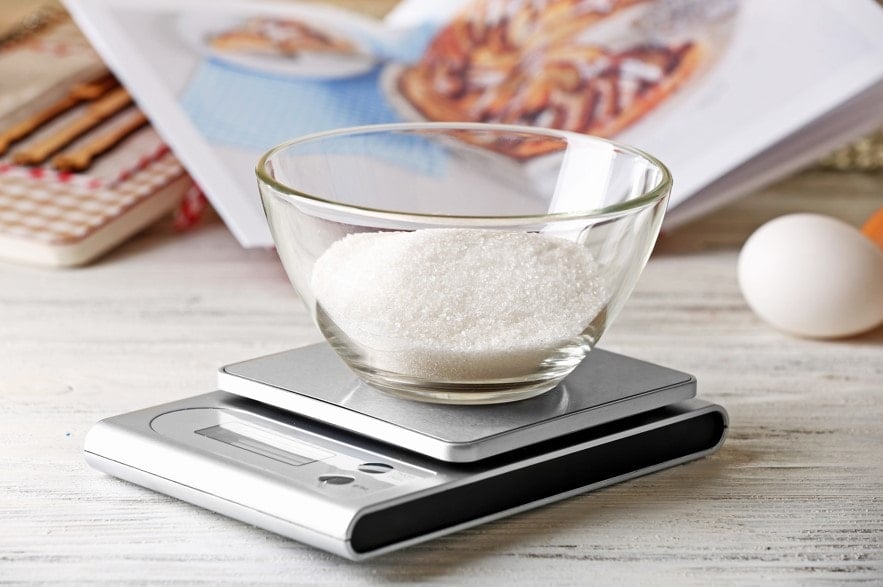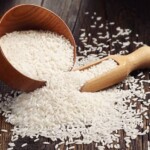This post may contain affiliate sales links. Please read my disclosure policy.

Have you ever been in the middle of preparing a delicious meal, only to stumble upon the question: how many oz in a cup? If you have, fret not! In this article, I’ll explore the nuances of converting ounces to cups and measuring ingredients for cooking. With a thorough understanding of measurements, you’ll be able to whip up dishes with precision and ease.
Ounces and Fluid Ounces: A Crucial Distinction
Before delving into the specifics of how many ounces there are in a cup, it’s important to clarify the difference between two commonly confused units of measurement: ounces and fluid ounces.
Ounces: A Measure of Weight
Ounces (abbreviated as “oz”) are a unit of weight, often used to measure dry ingredients in cooking and baking. The weight of an ingredient is determined by its mass and the force of gravity acting upon it.
Fluid Ounces: A Measure of Volume
Fluid ounces (abbreviated as “fl oz”) are a unit of volume, typically used to measure liquid ingredients. Unlike weight, volume measures the space occupied by a substance, regardless of its mass.
The Basic Conversion: How Many Oz in a Cup?
Now that we’ve established the difference between ounces and fluid ounces, let’s answer the primary question: how many oz in a cup? For liquid measurements, the conversion is straightforward—1 cup equals 8 fluid ounces. However, when it comes to dry ingredients, the conversion from ounces to cups isn’t as simple, as different substances may have varying weights per cup.
Measuring Dry Ingredients: When Weight Matters
For dry ingredients, the weight per cup can differ significantly. For instance, 1 cup of all-purpose flour weighs 4.5 ounces, whereas 1 cup of chocolate chips weighs over 6 ounces. Consequently, you cannot rely on a standard conversion between ounces and cups for dry ingredients.
The Solution: Weigh Your Ingredients
To ensure accuracy in your measurements, it’s best to weigh your ingredients with a scale. This method allows you to obtain the precise amount of each ingredient required by a recipe, regardless of whether it calls for ounces or cups.
Measuring Cups: Dry vs. Liquid
Measuring cups come in two main types: dry measuring cups and liquid measuring cups. It’s essential to use the appropriate type for the ingredient you’re measuring, as using the wrong one can lead to inaccuracies.
Dry Measuring Cups: Designed for Precision
Dry measuring cups are intended for measuring dry ingredients, such as flour, nuts, and berries. These cups hold the exact amount of an ingredient and should be leveled off with a flat edge to ensure precision.
Liquid Measuring Cups: Ideal for Fluids
Liquid measuring cups, on the other hand, are designed to measure liquids like water, cooking oil, and yogurt. These cups typically feature a pour spout and graduated markings to facilitate accurate measurements of liquid ingredients.
Common Measuring Mistakes to Avoid
Using the correct type of measuring cup can greatly influence the outcome of your recipes. In baking, improper measurements can lead to disastrous results. Here are some common mistakes to avoid:
Overpacking Flour
When measuring flour, use a dry measuring cup to portion out the exact amount you need. Lightly spoon the flour into the cup, then level it off with a flat edge. Doing so with a liquid measuring cup could result in tapping or packing the flour down, causing you to add more than the recipe calls for.
Spilling Liquid Ingredients
It’s challenging to measure the exact amount of a liquid in a dry measuring cup without spilling it over the sides. For example, when measuring bone broth, a liquid measuring cup allows you to pour in a precise quantity without making a mess on your kitchen counter.
The Golden Rule
Here’s a good rule of thumb to follow: when measuring dry ingredients, use dry measuring cups or weigh them with a scale. For liquids, stick to a liquid measuring cup.
Conversions for Common Ingredients
Below is a list of some popular ingredients and their respective conversions from ounces to cups. Keep in mind that these conversions are approximate and may vary depending on the ingredient’s density and packing.
- All-purpose flour: 1 cup = 4.5 oz
- Granulated sugar: 1 cup = 7 oz
- Brown sugar (packed): 1 cup = 7.5 oz
- Powdered sugar: 1 cup = 4 oz
- Cocoa powder: 1 cup = 4 oz
- Chocolate chips: 1 cup = 6 oz
- Chopped nuts: 1 cup = 4 oz
Measuring by Volume vs. Weight: Pros and Cons
While measuring ingredients by volume (using cups) is more common in home kitchens, measuring by weight (using a scale) offers several advantages.
The Pros of Measuring by Weight
- Accuracy: Measuring by weight provides a higher level of accuracy, as it accounts for variations in ingredient density and packing.
- Consistency: With precise measurements, you can achieve consistent results, particularly in baking, where ingredient ratios are crucial.
- Efficiency: Weighing ingredients can be quicker and easier, as you can simply add or subtract the desired amount without the need for multiple measuring cups.
The Cons of Measuring by Weight
- Initial cost: Purchasing a kitchen scale, if you don’t already own one, may incur an additional expense.
- Recipe adjustments: If a recipe provides measurements in cups, you may need to convert the quantities to ounces or grams, which could be time-consuming or confusing.
Tips for Measuring Ingredients Accurately
Ensure the success of your dishes by following these tips for accurate ingredient measurements:
- Choose the right measuring tool: Use dry measuring cups for dry ingredients and liquid measuring cups for liquids. For optimal accuracy, weigh ingredients with a scale.
- Level off dry ingredients: When using a dry measuring cup, level off the ingredient with a flat edge to achieve the exact amount.
- Don’t pack down ingredients (unless specified): Avoid tapping or packing down ingredients in the measuring cup, as this can lead to over-measuring. Exceptions include ingredients like brown sugar, which are often measured packed.
- Measure liquids at eye level: When using a liquid measuring cup, place it on a level surface and bend down to view the markings at eye level. This will ensure an accurate measurement.
The Importance of Precise Measurements in Cooking
While some recipes may be more forgiving of slight measurement inaccuracies, others—particularly baked goods—require exact ingredient ratios to yield the desired results. Understanding how many oz in a cup and using proper measuring techniques will help you create consistently delicious dishes.
The Bottom Line
Mastering the art of ingredient measurement can significantly improve your cooking and baking skills. Remember the key distinctions between ounces and fluid ounces, the importance of using the appropriate measuring tools, and the value of accurate measurements in crafting your culinary creations.
Now that you’re equipped with the knowledge of how many oz in a cup and the techniques for measuring ingredients, you’re well on your way to becoming a more confident and proficient cook. Happy cooking!




